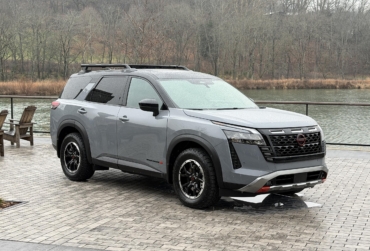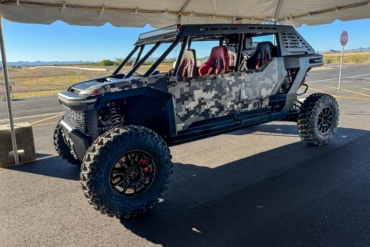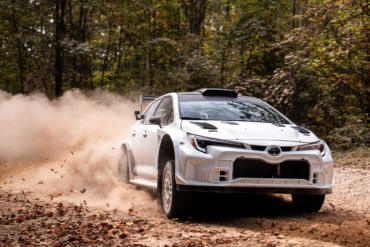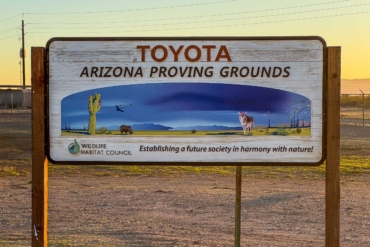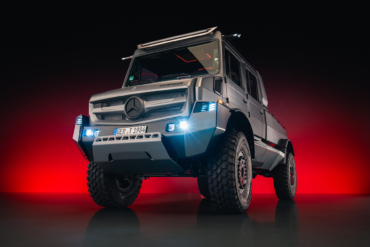The Japanese giant is introducing its first long-range battery-electric vehicle at this week’s Los Angeles Auto Show.
Roughly the size of the Toyota RAV4, the bZ4X will be the first of seven “Beyond Zero” battery-electric vehicles the automaker plans to bring to market in the coming year and one of 70 “electrified” offerings. The automaker is betting on its reputation for quality and reliability to give it a leg up on competitors, including Tesla, the 800-pound gorilla of the BEV market.

Toyota bZ4X
The bZ4X “represents our latest commitment to carbon neutrality,” said Mike Tripp, vice president of vehicle marketing for Toyota’s U.S. operations.
While not nearly as radical a design as the familiar Prius, the bZ4X adopts a futuristic design with slit-like LED headlamps framing a tapered nose. Like the Tesla Model Y, it foregoes a conventional grille, as there’s no need for cooling air under the hood.
The electric SUV’s creases have been carefully sculpted in wind tunnels to minimize range-stealing drag, with the arcing roof flowing into a high-mounted spoiler.

Inside, the bZ4X adopts the minimalist design that has become a norm among the latest BEVs, with virtually all knobs and other traditional controls replaced by a large touchscreen atop the center console. The system uses the same voice assistant-style operating system that recently debuted on the 2022 Toyota Tundra pickup.
Analog gauges have also been replaced by a smaller digital display rising above the steering wheel — the better to keep a driver’s eyes on the road.
Two Versions of the bZ4X Will Be Offered
A front-wheel-drive package will feature a single 150-kilowatt, 204-horsepower motor. The all-wheel-drive model adds a second motor on the back axle, adding another 80 kW, or 109 horsepower. The AWD model will launch from 0 to 60 in just over 6 seconds, Toyota claims.
The all-wheel-drive system will feature Toyota’s traction-enhancing X-Mode, according to Tripp, which will allow it to handle some “light off-roading.”
For the typical motorist, what’s likely to matter more is the estimated range for both models of about 250 miles per charge. That’s less than what Toyota projected for overseas versions and appears to reflect the tougher U.S. EPA test cycle. The FWD model is powered by a 71.4 kilowatt-hour lithium-ion battery, and the AWD version was upped to 72.8 kWh.
To back up its reputation for reliability, Toyota is guaranteeing the battery pack will retain 90% of its range, even after 10 years of use. That’s well above what its competitors have projected after a decade in service.
The all-electric SUV is one of seven bZ models Toyota is developing, while the company plans 15 BEVs for all of its various brands, including Lexus. Meanwhile, it plans to have 70 “electrified” models in its global portfolio by 2025.

BEV Technology
Though Toyota currently sells more battery-based products than any other manufacturer, it has been slow to embrace BEV technology, preferring conventional hybrids, plug-in hybrids, and even hydrogen fuel-cell vehicles, or HEVs, PHEVs, and FCVs, respectively. By the end of the decade, noted Tripp, electrified vehicles are expected to make up 80% of Toyota’s worldwide volume.
But there is growing pressure on manufacturers to shift entirely to battery power. Audi, Volvo, Bentley, General Motors, and others have already laid out timetables for phasing out internal combustion engines. Toyota global CEO Akio Toyoda, however, contends that BEV technology isn’t ready yet for a variety of reasons, including range, price, safety, and the lack of public charging infrastructure.
But the company may be shifting its viewpoint. In 2017, it forecast that models relying solely on internal combustion engines would account for about 45% of its sales by 2030. BEVs would deliver 10% of its volume, with various hybrids and fuel-cell vehicles accounting for the rest.
Toyota recently revised that formula and now expects gas-powered offerings to deliver roughly 15% of its volume, about the same as BEVs. HEVs, PHEVs, and FCVs would still make up more than 70%.
During a media background briefing, company officials said that could shift again, depending on customer demand and/or government mandate.

Remaining Agile
Toyota will adjust its production plans as necessary. The company announced in September that it will invest $13.5 billion in battery technology. A month later, it said it will put $3.4 billion into its U.S. battery program, including $1.2 billion to open a new battery plant by 2025.
How well the new bZ4X performs in the market could determine whether Toyota revises its plans upward yet again.

